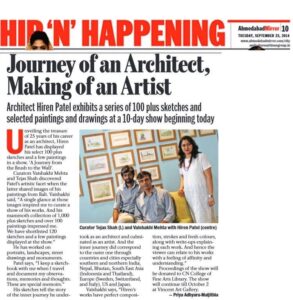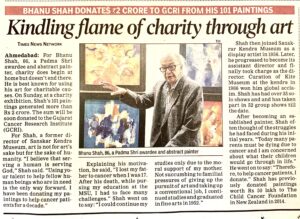Budhan theatre’s children celebrated 62nd Vimukti Divas through a play. The drama used Bhantu bhasha, Chhara community’s dialect, as a medium of communication learns Priya Adhyaru-Majithia
Apne desh ka naam kya hai? “Bharat” answers a child enthusiasticly. He is one of the 20 children attending a class of the Chhara community in a village. The class, comprising students aged five- to 15-years-old, has been asked this general knowledge question during an annual surveillance visit. Indira Gandhi kiski beti thhee? Woh Gandhijiki beti thee. The wrong answer receives a grand applause from the class and a visiting politician. – This is a scene from the political and social satire Agnankosh, a 35-minute drama, which was staged by the Chhara community theatre troupe Budhan as part of the 62nd Vimukti Divas (Freedom Day: August 31). Performed at the Sahitya Parishad Hall on Saturday, the play is a poignant presentation of the angst of the community, especially the youth.
The children of the community are victims to the deteriorating level of educational methods practiced at municipal and private community schools. And the youth have to bear the social stigma of being branded criminals. Krishnakant Chhara (15), who plays the lead role said, “The excruciating pain and suffering of social exclusion prompts my character to move towards an unending search for a piece of broken handcuffs. The handcuffs are a symbolic manifestation of the need to prove to society that the youth are free of the stigma.
The character lives the sentiment of a plea to eliminate the social stigma and exclusion that the tribe faces, despite getting freedom from the same on August 31, 1952.”
COMPILED FROM SHORT STORIES
Agnankosh is based on seven short stories by Atmaram Rathod. A Banjara community writer, Atmaram initiated documentation of the oral tradition of folk tales and wrote over 150 short stories in Marathi. The compilation is called Agnankosh. The play is based on stories like Mantriji ne kaha thhaa, Itihas ka suvarna padak, Sayana paagal, Ek laakh ki baat, Duniya dub rahi hai, Gantantra ki khoj and Samandar me aag — seven literary pieces of black humour and satire.
USE OF ‘BHANTU’ DIALECT
One of the higlights of the play is the use of the community’s dialect for the first time on stage. “This is the first time in the history of Budhan theatre that Bhantu bhasha — the community’s dialect — has been used in a stage performance of such a grand scale,” said Dakxin Bajarange (38), pivotal motivator of the Budhan theatre movement since 1989 and director of Agnankosh. “Bhantu is a fusion of four languages, Marathi, Hindi, Punjabi and Rajasthani. We have used this dialect in our play to preserve the community language. In order to involve children in dialect preservation, we started with the Budhan kids’ theatre troupe,” Dakxin said.
FIRST TIME ON STAGE
Interestingly, most of the children who performed Agnankosh were appearing on stage for the first time. More than 17 of the 20 children were first time performers. “The children rehearsed diligently, thrice a day, for over a month. They composed the communicative lyrics and music and also modified the dialogues to heighten the tone of the play,” said Kalpana Gagdekar (33), Co-director. The troupe has been training children since 2003.

